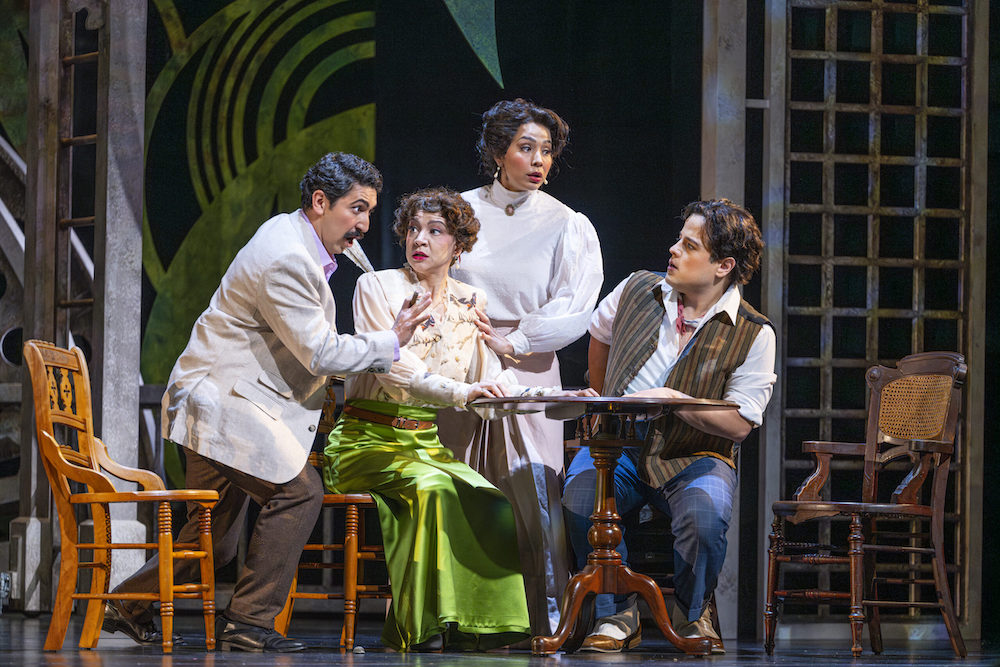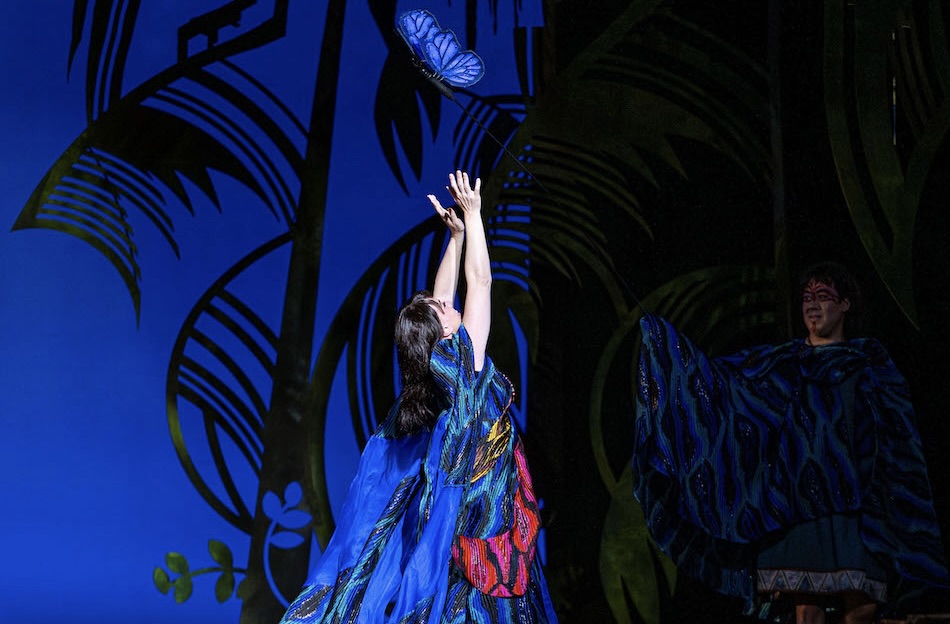Daniel Catán’s Florencia en el Amazonas is having a moment. And just now at Silicon Valley’s Opera San Jose it was a quite wonderful moment — well cast, smart production — in its soaring, overwhelmingly passionate, surpassingly urgent musical dramas.
Mexican composer Daniel Catán’s second opera La hija de Rappaccini (San Diego Opera,1994) brought him immediate U.S. operatic fame, inspiring Houston, Los Angeles and Seattle operas to commission Florencia en el Amazonas (Houston, 1996), followed by a Houston Opera commission for Salsipuedes o el amor, la guerra y unas anchoas [anchovies] (2004). Daniel Catán then composed Il Postino (a fictitious tale about Chilean poet Pablo Neruda) for baritone Placido Domingo (Los Angeles, 2010). Catán, by then a professor at Southern California’s [community] College of the Canyons, died at age 62, leaving his opera Meet John Doe unfinished.
Of course, nothing crowns operatic success so much as a production at New York’s Metropolitan Opera. Florencia en el Amazonas debuted there in November of last year [2023], though its New York City premiere had occurred in 2015 by the re-organized New York City Opera in a production from Nashville Opera. The opera has been seen in many American cities, but never, until now, in the Bay Area.
In Florencia en el Amazonas, overpowering all its personal dramas — most notably the enduring love of fictitious opera diva Florencia Grimaldi for the long-disappeared butterfly hunter Christobál — is the Amazon river, always magically alive in its absolutely colossal orchestral presence. Catán relied on minimal orchestral means — only double winds, tuba, harp, piano, strings and expanded percussion to create this massive presence, wonderfully achieved in San Jose by conductor Joseph Marchese and Opera San Jose’s very able orchestra.
In Catán’s opera the Amazon River is personified by Riolobo [rio=river, lobo=wolf, one of the many fanciful names in the opera] who has presence in the two worlds of the opera, a magically realistic world, and a world imbued by a mythical presence of magnificent natural forces. This role was well fulfilled by Maryland-born baritone Ricardo José Rivera, effecting a big presence for Riolobo in finely honed tones.
Daniel Catàn’s librettist was Mexican screen writer Marcela Fuentes-Berain, a student of famed Columbian novelist Gabriel Garcia Márquez, who originally was to provide a libretto for Catàn. Finally, the opera’s story is in fact very loosely based on his El amor en los tiempos del cólera, asking if love can be eternal.
In the opera the riverboat El Dorado departs Leticia, Colombia, to go downriver to Manaus (about 700 miles), The opera enacts the very fraught situations of a few of its passengers and two of its crew, the boat’s captain embodied by fine bass-baritone, resident Opera San Jose artist Vartan Gabrielian, and his son Arcadio, sung by Merixcan tenor César Delgado.
Like a Rossini opera, Florencia en el Amazonas is a succession of arias, duets, trios, quartets, each of its two acts capped by a finale (quintet, sextet or septet) with chorus. Each piece is a moment of high crisis. Florencia, sung by soprano Elizabeth Caballero (see lead photo), is searching to find herself and her lost, unseen lover, Christobál. The journalist Rosalba, sung by soubrette soprano Aléxa Anderson, wishes to connect with her idol Florencia (who will sing when the boat reaches Manaus) but Rosalba’s journey becomes complicated when she and Arcadio fall in love, though they both disdain love. As well Arcadio is imprisoned by both the river and by his father, the boat’s captain.

Wretched indeed were Alvaro, sung by baritone Efrain Solís, a former San Francisco Opera Adler, and his wife Paula, beautifully sung by mezzo-soprano Guadalupe Paz as a mature couple searching to find the love that had once bound them together. And the ship’s captain whose relationship with his river, the Amazon was decidedly one sided when the boat ran aground at the abrupt ending of Act I.
As performed in San Jose Catán’s opera is a gem, never succumbing to the mere lush richness of its sound, always finding its melodramas of great immediacy, its resolutions always elusive and its emotional challenges rendered terribly comprehensible — and very pleasurable to endure. The music, the river, life itself is indeed beautiful in the opera’s cinematic symphonic richness.
And, yes, when they arrive finally at Manaus where the diva is to perform, they cannot disembark because of an outbreak of cholera. But this is its moment of transcendence. No longer of this world Florencia Grimaldi becomes the rare butterfly, the emerald muse that her lover Christobál had once sought. Love is eternal.

This new production was staged by Puerto Rican director Crystal Manich, known to Opera San Jose audiences for her recent staging of West Side Story. The set was basically the bridge of a riverboat and a frame for its paddles, plus diverse drops of jungle foliage that descended from time to time. Transcendence was achieved by a blank, saturated blue surround. The set designer was Liliana Duque-Piñeiro known to Bay Area audiences for productions at West Edge Opera. The lighting of the stage and actors by designer Tlaloc López Watermann was very effective. The colorful costumes were designed by Oregon Shakespeare Festival’s Ulises Alcala.
The 16 singers of the Opera San Jose chorus seemed just the right number to populate the stage of San Jose’s repurposed historic movie palace, the California Theatre.
Michael Milenski
California Theatre, San Jose, California, April 20, 2024. All photos copyright David Allen, courtesy of Opera San Jose.